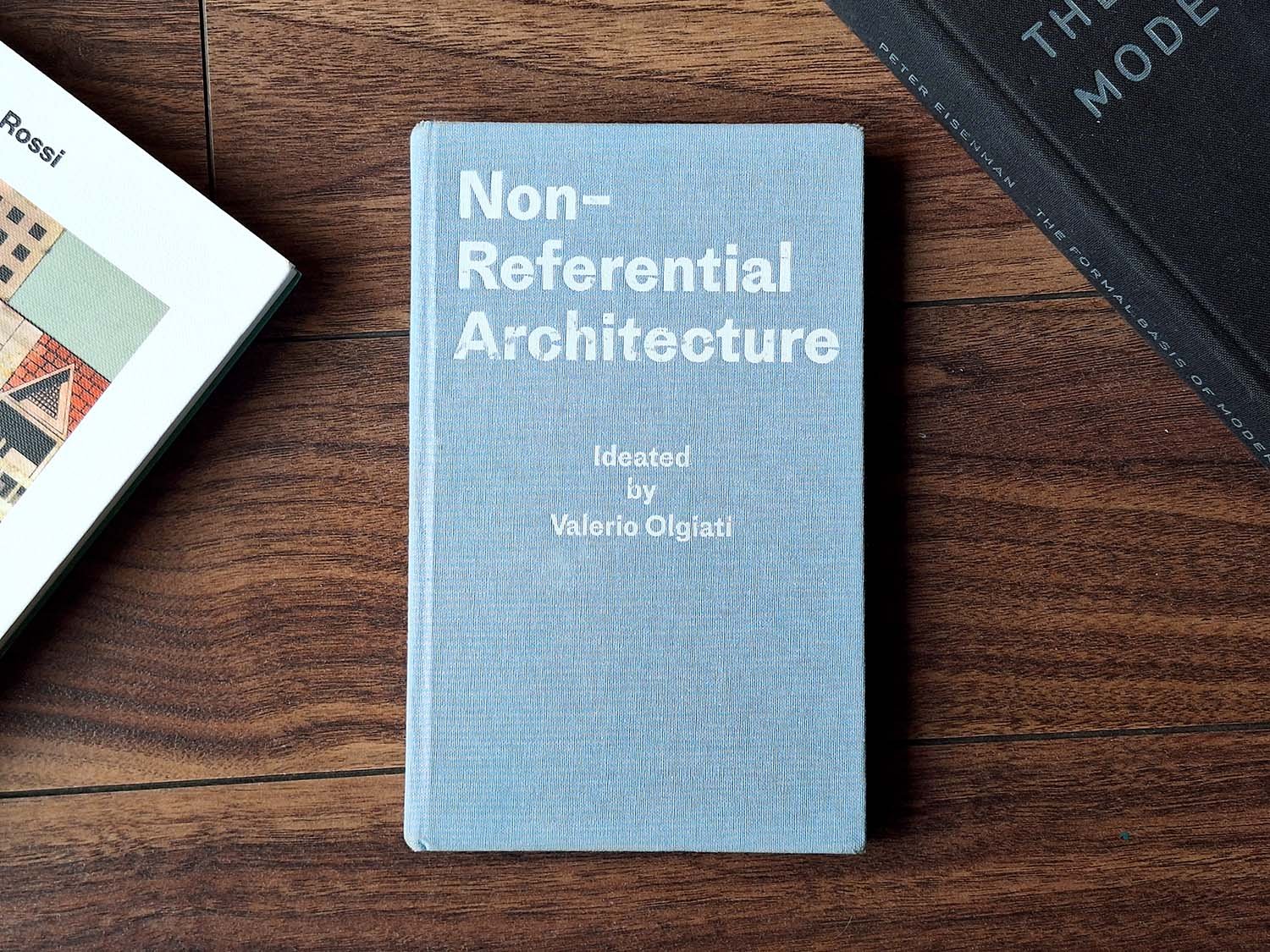Principles to create Architecture in our Times
Principles to create Architecture in our Times
Thoughts on “Non-Referential Architecture” by Markus Breitschmid & Valerio Olgiati
October 10, 2023
by Santiago Gómez Longás
It's been quite some time since a book on architectural theory has made a significant mark. "Non-Referential Architecture," authored by philosopher Markus Breitschmid and inspired by conversations with Swiss architect Valerio Olgiati, is relevant for architecture contemporary context. This concise text departs from the traditional approach by offering minimal graphical explanations, allowing the concept to shine with just a single drawing.
What sets this book apart is its audacious attempt to bring in a new era for architecture. After the waves of modernism and post-modernism, there's a realization that architecture no longer adheres to a single ideology or sacred text. Architects are now free to create without being bound by concepts. The focus shifts back to the core element: space, and understand all the architecture by this concept, not influenced of any extra-architectural ideas that are not relevant for this moment.
At the heart of non-Referential architecture is the idea of creating spaces that are form-generative and sense-making. Form-generative implies that the mere mention of the idea conjures a spatial sensation. Sense-making goes a step further, ensuring that the space offers a sensory experience, engaging the human existence and connection to the world.
Breitschmid outlines seven principles of non-Referential architecture:
1. Experience of Space: Recognizing spatial sensations as the primary material for expressing ideas, architecture becomes the medium for conveying these sensations.
2. Oneness: The architecture must create a sense of unity and narrative, emphasizing the individual's connection to the world. Every aspect of the architectural expression should contribute to the perception of the existential space and its significance in the present.
3. Newness: Embracing the architect's knowledge of the contemporary to introduce ideas that challenge conventional viewpoints and expectations. By spatial expression the architect should work in new ideas as philosophers and physics work in their fields.
4. Construction: Employing a single material to enhance formal and structural clarity, showcasing the architect's capability to express the full domain and qualities of that material, formally and structurally. Where the architects are in full domain of the building’s development, from design to construction.
5. Contradiction: Borrowing from Kant's conception of beauty, contradiction becomes a compositional strategy. It involves elements or spaces that stimulate dwellers, sparking their imagination and encouraging them to engage with the building on a deeper level. The architecture liberates itself from fixed connotations, inviting the mind to explore a non-referential space.
6. Order: Order serves as the bridge between the idea and the physical building. Deduction is the primary tool for architects to navigate this bridge. Starting from form-generative concepts, architects reach logical conclusions, ensuring that the resulting architecture is a faithful embodiment of the initial idea. The inductive way helps in some parts of the process like selecting the quality of materials, but doesn’t reach the intention of the sense-making idea.
7. Sensemaking: The reason why the building is being made (after all the reasons mentioned before based in how to do it). Acknowledging that in a world without collective truths, architecture becomes the physical embodiment of individual searches for meaning, a quest uniquely undertaken by architects.
At the end Beritschmid calls for architects’ authorship, as the base to create something new. Now in the concepts of Non-Referentiality the architects have leaned to inductive process to make architecture, only to solve problems and fit parameters. But is based on authorship that the architect can assume decisions, create form-generative and sense-making ideas that could influence the existence of the dweller of this non-referential world.
This is a short summary of an intriguing book that tries to decipher the ways architects work and how they should. Its only an invitation to acquire and read the book, and to join our community in Discord to open a discussion about it. We are always waiting for your thoughts that we are sure it will expand our perception and give us new ideas.


